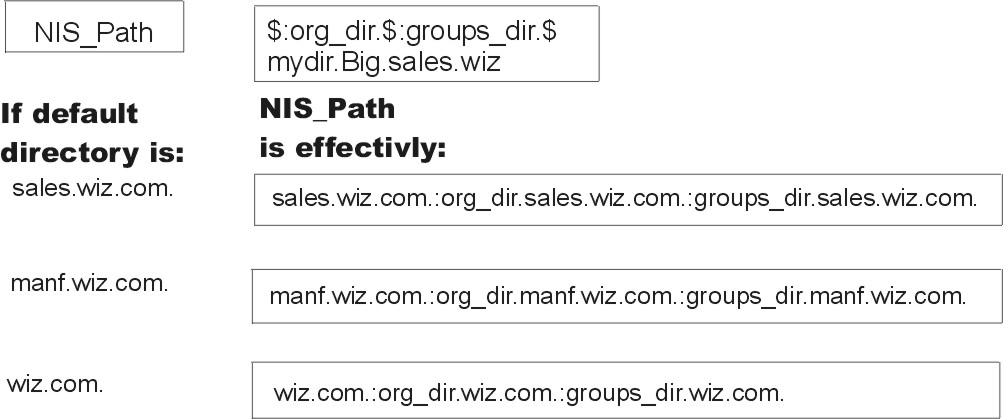
You can change or augment the list of directories that NIS+ searches by changing the value of the NIS_PATH environment variable. NIS_PATH accepts a list of directory names separated by colons. For example:
NIS_PATH=directory1:directory2:directory3...;export NIS_PATH
NIS+ searches through these directories from left to right. Like $PATH and $MANPATH, the NIS_PATH variable accepts the special symbol, $. You can append the $ symbol to a directory name or add it by itself. If you append it to a directory name, NIS+ appends the default directory to that name, as shown in the following figure).
Figure 4-9. Expanding Directory Pathnames Using NIS_PATH. This illustration shows how search names are expanded by appending each path in the NIS_PATH names. For example, if NIS_PATH is $:org_dir.$:groups_dir.$mydir.Big.sales.wiz, then a default directory of sales.wiz.com. has an effective NIS_PATH of sales.wiz.com.:org_dir.sales.wiz.com.:groups_dir.sales.wiz.com.
 |
If you use the $ sign by itself (for example, org_dir.$:$), NIS+ performs its standard name expansion. It starts looking in the default directory and proceeds through the parent directories. In other words, the default value of NIS_PATH is $.
Note: Additions and changes to your NIS_PATH may increase the number of lookups that NIS+ has to perform and thus slow down performance.